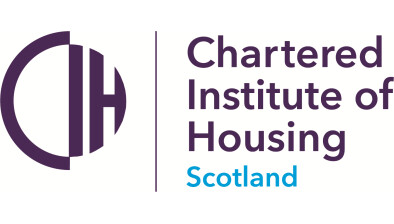Number of homeless households now higher than pre-pandemic levels

Housing minister Paul McLennan has reaffirmed the Scottish Government’s determination to work with partners to tackle homelessness in response to “deeply worrying” annual statistics published today.
Findings for the period 2022-23 show there were 39,006 applications for homelessness assistance – an increase of 3,247 (9%) compared with 2021-22, and higher than pre-pandemic (37,053 in 2019-20).
The number of households assessed as homeless or threatened with homelessness also increased by 2,903 (10%) to reach 32,242, also higher than pre-pandemic (31,618 in 2019-20).
There were 15,039 households in temporary accommodation at 31 March 2023 – a 6% increase compared with 14,214 at 31 March 2022. This compares to 11,807 at 31 March 2020.
The number of children in temporary accommodation has also increased to 9,595 in March 2023 from 8,805 in March 2022 (9%). This compares to 7,355 at 31 March 2020.
Mr McLennan said: “Today’s statistics are deeply worrying. They show Scotland is facing the same trend as the rest of the UK where there is a clear impact on households of the current cost of living crisis and the continuing fall out from the pandemic on homelessness. Tackling homelessness is a key priority and it is critical that local government and other partners work with us to reach our shared goal of reversing these figures and delivering on our long term strategy for tackling homelessness.
“I am very disappointed by the high number of people, including many children, who were living in temporary accommodation in March 2023. Scotland has the strongest rights across the UK nations for people experiencing homelessness and - whilst it shows our legislation is working to make sure people are not roofless and provided with a home - temporary accommodation should be just that; temporary.
“I have been meeting with housing conveners in the areas with the greatest homelessness pressures and discussing action we can take collectively to reverse these figures. We are already acting on the recommendations of the expert Temporary Accommodation Task and Finish Group, including providing funding for councils and social landlords to rapidly acquire properties for use as social homes, asking social landlords to increase allocations to homeless households, and supporting councils to develop targeted plans.
“As well as local authorities and social landlords, we are working with key partners – including the Convention Of Scottish Local Authorities, the Association of Local Authority Chief Housing Officers, the Scottish Housing Regulator and the Scottish Federation of Housing Associations – to consider what we need to do differently to reduce the use of temporary accommodation.
“We are also investing heavily to increase housing supply and the number of affordable homes completed in the latest year to end March 2023 is the highest annual figure in more than two decades.”
The figures also revealed that households becoming homeless from a private rented tenancy have been reacting to legislation changes. There was a low of 3,049 in 2020-21, following emergency Covid-19 legislation (11% of all homeless households). Since this was lifted in May 2021, numbers have been increasing, reaching 2,990 across the first six months of 2022-23 alone (19% of all homeless households). However, the cost of living legislation introduced in October 2022 to protect renters resulted in a drop to 2,200 for the second six months of 2022-23 (13% of all homeless households).
The housing minister added: “The statistics also indicate our emergency tenant protection legislation has led to a drop in households becoming homeless from a private tenancy and we intend to take forward legislation to provide greater protections to prevent homelessness, keep rents affordable, and make tenancies more secure.”
Elsewhere, there has been an increase in rough sleeping, with 2,438 households reporting rough sleeping during the previous three months and 1,500 the night before the application. These remain lower than pre-pandemic and are the same proportions of all applications as the previous year (6% and 4% respectively).
Homelessness applications that closed in 2022-23 which used temporary accommodation spent 223 days in temporary accommodation on average. This increased from 214 days in 2021-22 and 175 days in 2017-18, when the time series started.
There were 445 instances of households not being offered temporary accommodation. This is a decrease of 38% compared to 2021-22. Almost all of these (420) were in Edinburgh.
Meanwhile, 83% of households assessed as unintentionally homeless secured settled accommodation in 2022-23, increasing from 82% in 2021-22.
The average length of time to close a homelessness case has been increasing over time and reached an average of 266 days in 2022-23. This compares to 262 days in 2021-22 and 226 in 2019-20.
Of the 32,242 homeless households: 62% of applicants were aged 25 to 49; 66% were single person households; 85% of applicants were of White ethnicity; and 51% of applicants had at least one support need.
There were 275 applications nationally which reported being from a Ukrainian displaced household, this accounts for 0.7% of the total.
The Scottish Federation of Housing Associations (SFHA) said its members are fully supportive of efforts to end homelessness.
Sally Thomas, CEO, said: “It’s everyone’s right to live in a safe, warm, affordable home, but for many people in Scotland, this is just not the reality.
“Housing associations and co-operatives are fully supportive of efforts to end homelessness, already make a significant contribution in doing so and will do more where they can. We are working with Scottish Government to try to find ways of getting people into permanent accommodation more quickly: however, fundamentally, this is a problem of supply. Scotland is not on track to deliver the target of 110,000 affordable homes by 2032, and urgent, significant action is needed.
“Furthermore, we must remain focused on preventing homelessness through early intervention and prevention, working with and across all levels of government to make sure people have a home, as well as any specific support they might need to sustain it.”
A spokesperson for the Association of Local Authority Chief Housing Officers (ALACHO) said: “Figures published today by the Scottish Government show an almost unrelenting upward trend in all the key homelessness indicators. The number of households facing homelessness has risen, the number of households and children in temporary accommodation is at record levels and in some council areas they can expect to remain there for anything up to 16 months.
“The latest homelessness statistics are not a surprise to heads of housing of Scotland’s local authorities who have been concerned for some time that we are in now in a housing and homelessness emergency. ALACHO is working closely with COSLA and our housing association colleagues and with the Scottish Government to accelerate actions to produce more options to help homeless people move on from temporary accommodation.
“Now more than ever, urgent action is required from us all to make a difference to people’s lives. Most of all we need more social rented homes.”
Ewan Aitken, CEO of Edinburgh homelessness charity Cyrenians, added: “We are in the grip of a housing emergency in Scotland. That something so fundamental, something most of us take for granted – a safe and secure home – is out of reach and remaining out of reach for so many is an unconscionable reality made clear in today’s figures.
“As homelessness presentations continue to rise and the backlog in housing continues to build, we need to see urgent action from the Scottish Government and local authorities to end this crisis. That means substantial investment in social housing, land reform, and improving the supply of affordable homes which meet people’s basic needs. But housing alone isn’t enough – we need to address this as the public health crisis it is, and urgently invest in ways to tackle homelessness before it happens through early intervention, social support, community care, and ending poverty.
“The last child poverty figures published in this country back in March of this year told us that nearly a quarter of children in Scotland are living in poverty. We now know how many children and families are homeless. We can’t live with these figures.
“Homelessness happens because of poverty and huge health inequalities, creating lasting impacts that echo through people’s lives. That so many people experiencing this is a tragedy – but it’s in our power as a nation to prevent. Every day charities like Cyrenians make a significant impact, but in order to stop these numbers continuing to rise, we have to see a collective commitment to sustainable prevention activity.
“In next week’s Programme for Government, the Scottish Government has the opportunity, by prioritising affordable housing, new and long term funded prevention duties, and social support, to turn the tide on this crisis. We hope these latest numbers force a commensurate response – we can’t turn our back on the human cost of the housing crisis.”
Katie Smart, director at Places for People Scotland, added: “These figures are heartbreaking. The concerning rise in homelessness applications and the shocking number of children in temporary accommodation should be an urgent wake-up call. I know that there is a shared determination, within the housing sector and government, to address the housing crisis. It’s vital this determination turns into immediate action.
“We need to build more homes, at pace, to ensure that everyone in Scotland has a safe, warm and affordable place to call home. These figures demonstrate exactly why we must make this a priority.”









